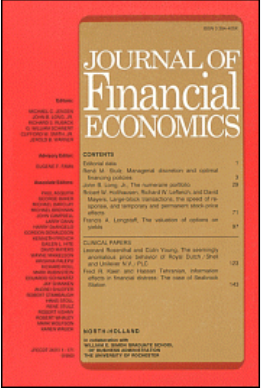Can everyone tap into the housing piggy bank? Racial disparities in access to home equity
IF 10.4
1区 经济学
Q1 BUSINESS, FINANCE
引用次数: 0
Abstract
We document large racial disparities in the ability of homeowners to access their accumulated housing wealth. Minority homeowners are significantly more likely to have their mortgage equity withdrawal (MEW) product applications rejected than White homeowners, and the unconditional disparities are significantly larger than those found in prior studies that focused on purchase and rate/term refinance loans. Had Black homeowners faced the same MEW denial rate as White homeowners in our sample period we show they would have extracted an additional $11.2 billion in housing equity, or almost 25% of the total amount of actual equity extracted. Controlling for key underwriting variables significantly narrows the racial disparities, with the Black–White gap falling by nearly 85%, and the Hispanic-White gap falling by more than 75%. Credit scores and debt-to-income ratios are the most important factors explaining the gaps, while differences in loan-to-value ratios contribute only modestly. “Residual” disparities after conditioning on observable underwriting factors are large and vary significantly across lenders. A battery of tests suggests that differences in unobserved underwriting factors are unlikely to fully explain the residual disparities, which tend to be larger in geographic areas characterized by more racial animus.
每个人都能动用住房储蓄吗?获得房屋净值的种族差异
我们记录了在房主获得其积累的住房财富的能力方面存在巨大的种族差异。与白人房主相比,少数族裔房主的抵押权益撤回(MEW)产品申请被拒绝的可能性要大得多,而且这种无条件差异明显大于之前研究中发现的、专注于购买和利率/期限再融资贷款的差异。在我们的样本期内,如果黑人房主面临与白人房主相同的新住房拒绝率,我们发现他们将额外获得112亿美元的住房资产,或几乎占实际资产提取总额的25%。控制关键的承保变量显著缩小了种族差异,黑人与白人之间的差距下降了近85%,西班牙裔与白人之间的差距下降了75%以上。信用评分和债务收入比是解释这种差距的最重要因素,而贷款价值比的差异只起到了很小的作用。在对可观察的承保因素进行调节后,“剩余”差异很大,并且在各贷方之间差异很大。一系列的测试表明,未观察到的承保因素的差异不太可能完全解释剩余的差异,这些差异在以种族敌意为特征的地理区域往往更大。
本文章由计算机程序翻译,如有差异,请以英文原文为准。
求助全文
约1分钟内获得全文
求助全文
来源期刊

Journal of Financial Economics
Multiple-
CiteScore
15.80
自引率
4.50%
发文量
192
审稿时长
37 days
期刊介绍:
The Journal of Financial Economics provides a specialized forum for the publication of research in the area of financial economics and the theory of the firm, placing primary emphasis on the highest quality analytical, empirical, and clinical contributions in the following major areas: capital markets, financial institutions, corporate finance, corporate governance, and the economics of organizations.
 求助内容:
求助内容: 应助结果提醒方式:
应助结果提醒方式:


